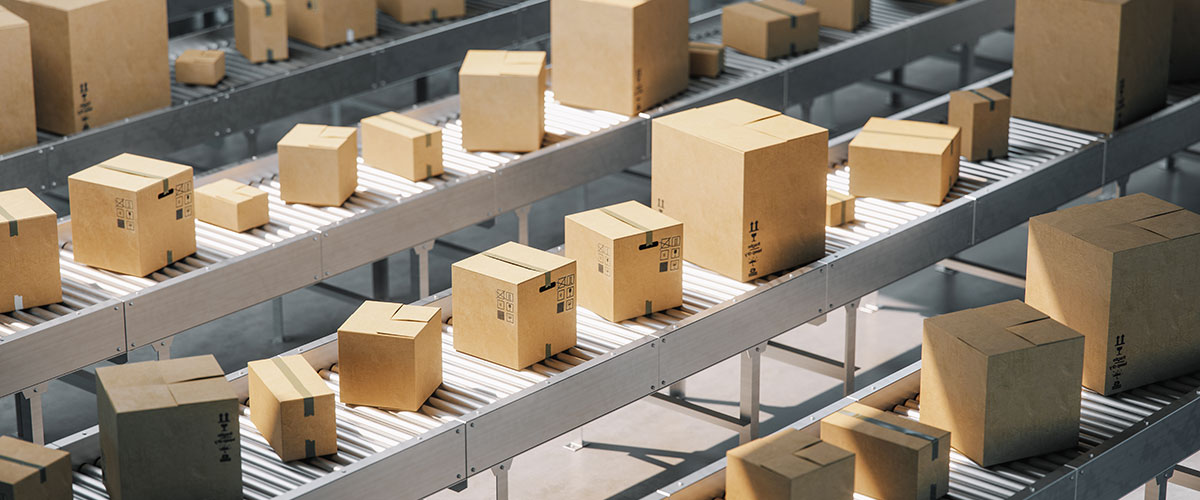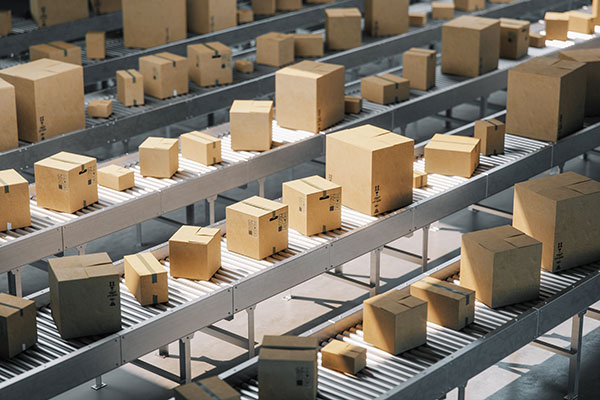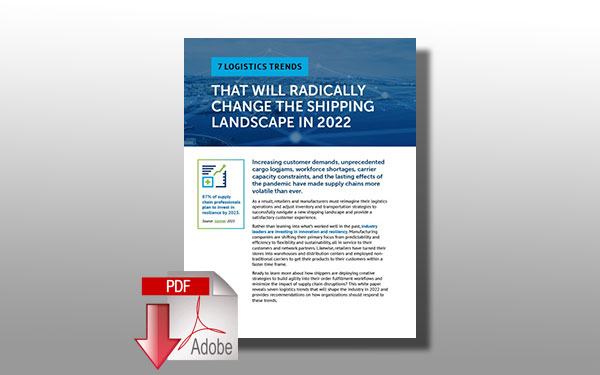Why Peak Season Planning Needs to be a Year-Round Endeavor

Order fulfillment and logistics teams should be looking at peak season planning year-round to keep their operations prepared.
As the world continues to grapple with the ripple effects of a global pandemic, retailers and manufacturers are working overtime to reimagine their parcel shipping and order fulfillment operations.
While it’s nice to imagine a future in which things return to some semblance of normal, the reality is that today’s landscape may just be the new normal.
A whopping 75% of supply-chain leaders have faced issues producing and distributing goods since the pandemic began — and believe those issues will significantly change how they operate in the near future.
The question is, how do organizations rework their logistics operations in a way that’s both cost-efficient and highly effective in meeting consumer expectations?
First, let’s take a closer look at why order fulfillment and logistics teams should be adopting a 12-month peak season plan that keeps their operations prepared for whatever the future may hold.
Supply Chain Disruptions are Unpredictable
Historically, retailers and manufacturers have minimized their supply chain risks by accounting for future events that could cause trouble. Disruptions like poor supplier performance or transportation breakdowns were common enough that shippers could determine the likelihood of these occurrences and estimate their impact on supply chain performance.
But in today’s world, supply chain disruptions occur with little to no warning, leaving order fulfillment teams scrambling to keep operations running smoothly. In 2021 and already in 2022, disruptions have come in many shapes and sizes.
Weather
The consequences of 2021 weather events including Hurricane Ida, a typhoon near Chinese ports, the Texas freeze, British Columbia flooding, and December tornadoes across the U.S. make it clear there is more than a health crisis challenging supply chains.
In a 2020 article from the McKinsey Global Institute:
“…questions about supply-chain risks and resilience are now being raised in the context of the global COVID-19 pandemic as well as acute weather events. As climate change makes extreme weather more frequent and/or severe, it increases the annual probability of events that are more intense…increasing the likelihood of supply-chain disruptions.”
For example, McKinsey estimates the likelihood of a hurricane to disrupt leading-edge chip production, and therefore electronics supply chains, may grow two to four times by 2040.
Suffice to say, weather-related supply chain disruptions will continue to wreak havoc in the coming years, and order fulfillment teams need to be proactive when it comes to getting ahead of the problem.
According to Olivia Rockeman in Bloomberg, a good first step for companies looking to fortify order fulfillment operations against weather events is to:
“…map their supply chains to better understand exactly where risks lie, whether that’s a supplier on the Gulf Coast subject to hurricanes or a transport hub susceptible to flooding.”
In addition, retailers and manufacturers should forge strong supplier relationships to ensure consistent and clear communication during a climate crisis.
Overseas Conflicts
Global conflicts between far-off countries may not seem like a pressing concern to your onshore operations, but overseas disputes can have very real-world implications on supply chains in the U.S. For example, the Russian invasion of Ukraine is expected to spike prices for a wide range of commodities, from gas and oil to wheat and barley.
As hard as you may try, predicting these global conflicts and how they’ll impact supply chains in the United States is almost impossible. However, the experts at Gartner recommend supply chain leaders gain visibility into all tiers of their network, especially tier-1 suppliers. Gartner also recommends diversifying sources and routes where possible and preparing risk response plans.
Labor Shortage
Despite recent wage increases, warehouses and carriers still struggle to hire and retain frontline employees. There’s also been an uptick in absenteeism and strikes, further fueling the supply chain shortage fire. And even as we get a firmer grip on the pandemic, evidence suggests warehouses will still face worker-retention issues. In a recent article in LaborNotes, Kim Moody writes, “According to the American Trucking Association there’s a ‘historic high’ shortage of 80,000 drivers.
This isn’t just truckers down with the virus. Nor is this ‘shortage’ due to a lack of people who could drive trucks. As any Teamster can tell you, it’s stagnant pay, long hours, high stress, and health issues that drive workers from the industry and keep job seekers away. And that was the case well before the pandemic struck.
Warehouse workers, who also saw stagnant wages and poor conditions over this period, were also in relatively short supply for the same reasons. The recent wage increases—which resulted from these labor shortages and high ‘quit’ levels—are too little, too late.”
To combat labor challenges, supply chain managers and logistics experts may want to consider migrating from a “Just in Time” (JIT) order fulfillment approach to a “Just in Case” (JIC) model. Brands are now keen to hold a larger buffer stock and plan for longer fulfillment lifecycles.
Many are investing in more extensive storage and distribution centers to create self-mandated insurance policies that will help protect their operations — and their customers — against supply chain disruptions such as labor shortages. Rather than keeping their inventory as lean as possible to minimize extra costs, manufacturers and retailers are planning for the unexpected and making upfront investments in more stock to secure their operations in the long term.
However, transitioning to a Just in Case (JIC) supply chain strategy doesn’t mean companies should take their best guess at inventory needs or buy out suppliers at every opportunity. On the contrary, companies should lean heavily on their data, including e-commerce data, logistics data, and inventory performance data.
This data can help companies adjust their inventory management processes to optimize lead times without putting themselves at risk. Increased data visibility will enable brands to make informed decisions and deliver optimal results for their end consumers and their bottom line while still accounting for potential disruption in the months or years ahead.
Fuel Prices
As previously mentioned, gas and oil prices can spike unexpectedly. And when they do, it can have severe implications on retailers’ and manufacturers’ ability to move goods quickly and efficiently. An increase in fuel costs inevitably leads to a rise in transportation costs.
On top of this, shippers will have to deal with surcharges passed down by suppliers, further increasing the cost of producing and delivering items to customers. The trickle-down effect from surging fuel prices can be brutal for unprepared shippers, which is why you should work today to prepare for the worst.
For shippers looking to find a workaround, diversifying transportation networks serves as a valuable tactic to combat surcharges. Companies that can create greater access to more carriers and invest in a cloud multi-carrier parcel shipping system will have flexibility and diversity in fulfillment and stand a better chance of keeping costs in check.
Effective multi-carrier parcel shipping software allows you to quickly onboard new carriers – including regional and last-mile carriers – and automatically rate, rate shop, and identify the best carrier service for each parcel shipment given the shipment’s origin, destination, delivery timeframe, delivery cost, and any applicable business rules. From there, the software can consolidate shipments at the time of order to reduce your transportation costs further and print carrier compliant labels or other necessary documentation.
Consumer Expectations Have Raised the Bar
In the wake of the pandemic, the world changed in a lot of ways, particularly in the emergence of e-commerce as consumers’ preferred shopping method. McKinsey recently reported that, when looking at historical data, the e-commerce industry saw 10 years of growth in just 3 months.
In addition to high order volumes, the uptick in e-commerce spending has also heightened consumer expectations for fast delivery. Thanks to brands like Amazon, 41% of consumers are desirous enough of same-day delivery to pay a charge for the service, meaning the pressure is on your order fulfillment teams to get products out the door and onto the doorstep – fast.
Considering how e-commerce is forcing retailers to speed up their operations and handle more order volume on a consistent basis, it makes sense for order fulfillment teams to treat every month as if it were the traditional peak season. Building out your carrier network with multiple options from which you can source transportation is a good way to remain competitive in the modern supply chain landscape.
Also key is adopting and promoting omnichannel distribution strategies that allow you to pull multiple e-commerce order fulfillment levers – such as ship from distribution center or warehouse; ship from store; buy online pickup in store (BOPIS); buy online pickup curbside (BOPIC); and buy online, return in-store. But to pull these various levers, shippers must have a distribution infrastructure in place that includes a cloud multi-carrier parcel shipping system.
A cloud multi-carrier parcel shipping system seamlessly integrates with a retailer's WMS, OMS, e-commerce, and ERP solutions to automate high volume, multi-carrier, omnichannel shipping.
Regardless of which delivery option a customer chooses, the system automatically selects the right carrier service for each order according to parcel origin, parcel destination, carrier contracts, and business rules; and creates or acquires the tracking, labels, and documents.
Therefore, retailers can satisfy customers’ delivery requirements and drive down the cost of shipping while transforming logistics into a profit center within the business.
Be Ready for Whatever Tomorrow Holds
Navigating an uncertain future may seem like a lofty endeavor. Operating in peak-season mode year-round is no easy feat and requires proactive action and hard work on your end. But lightening the supply chain load is made much easier with the right tools at your disposal.
At Logistyx, we empower manufacturers, retailers, and logistics providers to ship millions of parcels worldwide at the lowest possible cost. Our platform is designed with the future of multi-carrier parcel shipping in mind and works to help you thrive in our same-day delivery economy while handling unforeseen disruptions in stride.
Related: Time to Plan for the 12-Month Peak Season
Related Resource
7 Logistics Trends that will Radically Change the Shipping Landscape in 2022
Increasing customer demands, unprecedented cargo logjams, workforce shortages, carrier capacity constraints, and the lasting effects of the pandemic have made supply chains more volatile than ever.
Article Topics
Logistyx Technologies News & Resources
Prologis and Home Depot leadership address the capabilities of AI for logistics Maersk addresses flexibility and variability with innovation Embracing the Cross-Border E-Commerce Opportunity Optimize Your Parcel Shipping Strategy Why Peak Season Planning Needs to be a Year-Round Endeavor 7 Logistics Trends that will Radically Change the Shipping Landscape in 2022 E2open makes second acquisition in less than a year, bringing Logistyx Technologies into the fold More Logistyx TechnologiesLatest in Transportation
Ask an Expert: How Shippers Can Prep for Hurricane Season UPS Struggles in First Quarter With Steep Earnings Decline FedEx Announces Plans to Shut Down Four Facilities The Two Most Important Factors in Last-Mile Delivery Most Companies Unprepared For Supply Chain Emergency Baltimore Bridge Collapse: Impact on Freight Navigating Amazon Logistics’ Growth Shakes Up Shipping Industry in 2023 More Transportation














